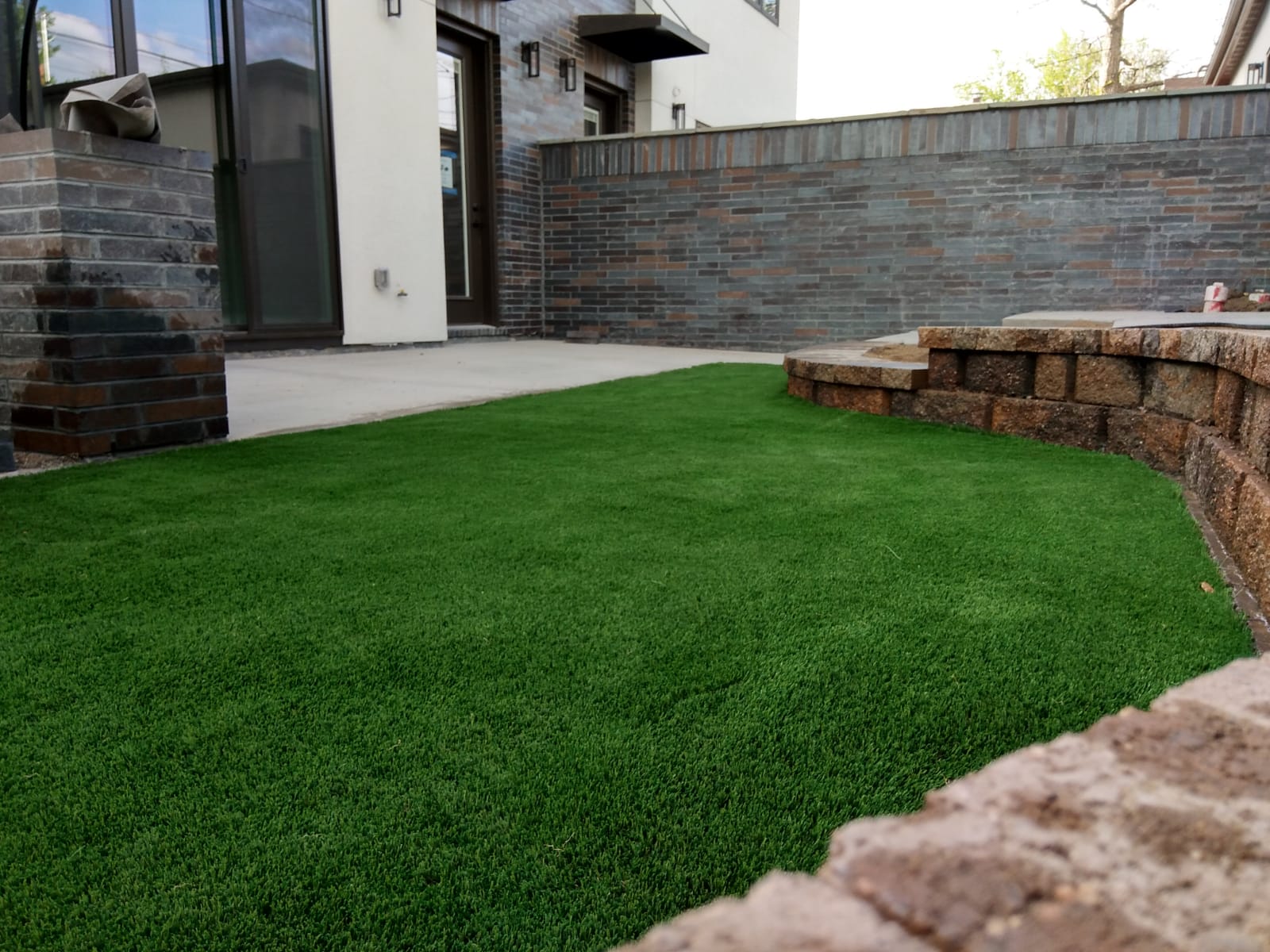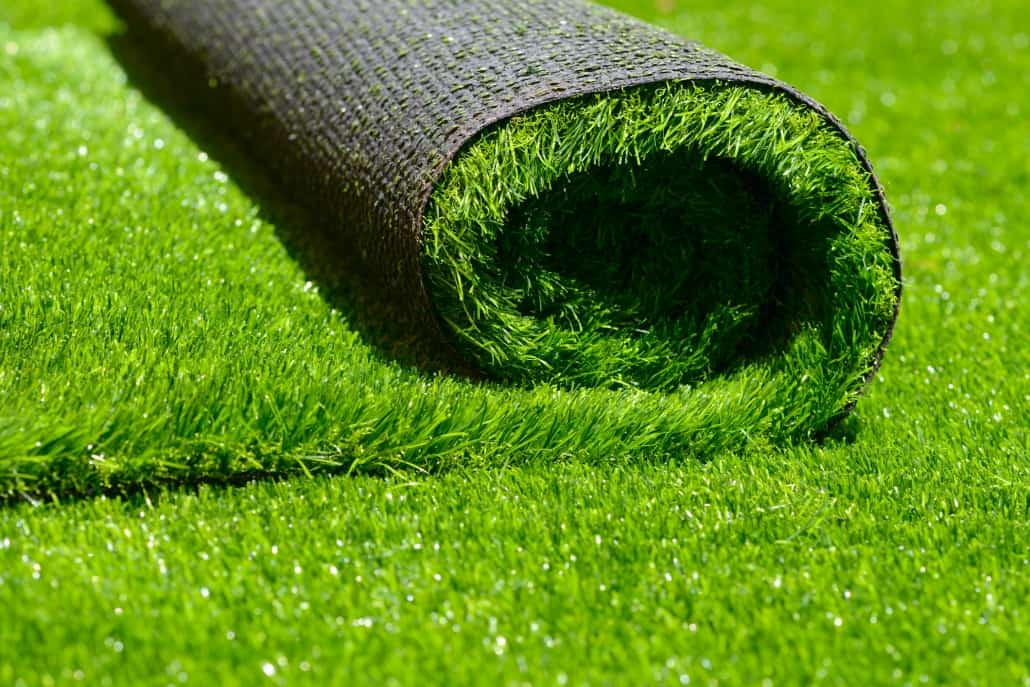Top Factors to Take Into Consideration Artificial Yard for a Low-Maintenance and rich Backyard
As home owners significantly seek lasting services for exterior areas, artificial lawn presents an attractive alternative to typical lawns. Its capability to maintain a dynamic appearance year-round without the problems of mowing, chemical, or watering therapies makes it a practical option for those intending to minimize upkeep efforts. In addition, the ecological advantages, consisting of substantial water preservation and decreased dependence on pesticides, line up with modern ecological worths. The benefits prolong beyond simple aesthetic appeals and sustainability; exploring the complex ramifications of man-made turf exposes a comprehensive technique to lawn management that qualities much deeper factor to consider.
Year-Round Plant
One of the most considerable benefits of fabricated yard is its capacity to give year-round greenery, regardless of environment problems. Home owners frequently deal with obstacles in preserving a lively yard because of seasonal modifications, droughts, or hefty rains. Artificial turf gets rid of these concerns, making sure a consistently rich look throughout the year.
This artificial choice is engineered to stand up to varied weather condition circumstances, from sweltering summer warm to cold winter season temperatures. Unlike all-natural grass, which may brownish or become uneven throughout extreme conditions, synthetic grass maintains its dynamic color and structure, improving the aesthetic appeal of any landscape.
Additionally, synthetic grass is immune to parasites and diseases that normally impact all-natural lawns. This resilience adds to its long-lasting elegance, as there is no requirement for chemical treatments or fertilizers that can be harmful to the atmosphere. In addition, house owners can delight in the visual advantages of a well-maintained grass without the intermittent obstacles posed by natural lawn care (backyard artificial grass).
Reduced Maintenance Initiatives
Synthetic turf substantially lowers upkeep efforts, permitting home owners to appreciate an immaculate lawn without the lengthy jobs related to natural lawn treatment. One of the most significant advantages of synthetic lawn is the elimination of routine mowing. With no demand for a lawnmower, home owners conserve both time and the expense of upkeep related to this devices.

Cleaning artificial turf is uncomplicated; an easy rinse with a tube or the occasional cleaning to remove particles is usually sufficient - artificial grass. This convenience of care enables homeowners to spend more time appreciating their outdoor rooms rather than laboring over them. In summary, the minimized upkeep initiatives connected with man-made yard make it an appealing choice for those seeking a beautiful, easy backyard
Water Preservation Benefits
The significant reduction in maintenance initiatives linked with artificial grass includes water conservation, making it an eco-friendly alternative for home owners. Traditional lawns require significant amounts of water to remain vibrant and lush, commonly leading to too much water use, specifically in deserts. On the other hand, artificial grass eliminates the demand for normal watering, substantially lowering the general water intake in your yard.
By selecting artificial grass, house owners can preserve hundreds of gallons of water yearly. This change not only benefits individual houses yet additionally adds to broader environmental campaigns aimed at decreasing water check my source waste. In areas experiencing water deficiency, the fostering of artificial grass can play a significant duty in reducing the effects of dry spell and guaranteeing that important water sources are used much more successfully.
Moreover, the installment of man-made turf can aid lower municipal water need, profiting the community in its entirety. With expanding awareness of ecological issues, selecting synthetic yard offers as a proactive step in the direction of sustainable landscape design, assisting to maintain natural water resources while maintaining an aesthetically pleasing exterior space (artificial grass installation). In summary, man-made yard offers a compelling remedy for water conservation, lining up ecological responsibility with modern-day landscaping demands

Pest and Allergic Reaction Reduction
A significant advantage of setting up artificial grass is its ability to minimize bugs and allergens in outside areas. Standard yard yards commonly offer as reproducing grounds for bugs such as mosquitoes, ticks, and ants, which can create pain and wellness dangers for family pets and households. In contrast, artificial yard gets rid of the organic material that draws in these bugs, thus significantly decreasing their populaces in your lawn.
Furthermore, natural lawn can harbor mold and mildew, pollen, and other allergens, which can cause allergies and respiratory system problems for sensitive people. Artificial lawn supplies a cleaner atmosphere, minimizing the capacity for allergenic responses. Unlike all-natural turf, artificial lawn does not generate plant pollen, making it an outstanding alternative for allergy victims seeking to appreciate their exterior spaces without the danger of flare-ups.
Additionally, the lack of dirt in synthetic grass means there is much less dust and dirt, more reducing air-borne allergens. This low-maintenance alternative not just improves the visual charm of your yard yet also advertises a healthier outside environment, enabling family members to enjoy their lawns without the continuous worry of irritants and pests. Therefore, artificial lawn is a tactical option for those focusing on convenience and health in their outdoor space.
Long-Term Price Savings
Buying artificial lawn can bring about considerable lasting price savings for house owners. While the first financial investment might seem considerable, the monetary advantages gradually can be substantial. Fabricated yard eliminates the demand for regular lawn maintenance expenses, such as mowing, feeding, and watering. Conventional lawns commonly call for considerable sources to preserve a rich appearance, especially in areas susceptible to drought click site or extreme weather condition problems.
Moreover, the long life of artificial grass even more enhances its cost-effectiveness. Most top quality artificial yard items can last 15 to 25 years with very little maintenance, minimizing the requirement for replacement or extensive fixings. On the other hand, all-natural yard might call for constant reseeding and regular treatment, which can promptly build up in expenses.
Utility cost savings are one more critical element. Homeowners can anticipate to see reduced water useful source expenses, as synthetic grass does not require watering. Furthermore, the decrease in grass care solutions can liberate beneficial time and resources, allowing property owners to allocate their budget plans elsewhere.
Verdict
In recap, artificial turf provides countless benefits for homeowners seeking a low-maintenance and vibrant landscape. Ultimately, the long-term expense savings connected with man-made turf solidify its status as a useful and sustainable service for boosting exterior rooms.
Fabricated yard significantly reduces maintenance efforts, allowing homeowners to delight in a beautiful yard without the lengthy jobs connected with all-natural turf care.The substantial reduction in maintenance efforts connected with synthetic grass extends to water preservation, making it an eco pleasant choice for house owners. In contrast, artificial turf eliminates the need for normal watering, drastically lowering the total water usage in your backyard.
In areas experiencing water shortage, the fostering of man-made turf can play a substantial function in minimizing the results of drought and ensuring that beneficial water resources are utilized extra effectively.
With growing recognition of ecological issues, selecting man-made lawn serves as an aggressive step in the direction of lasting landscape design, helping to maintain natural water resources while preserving a cosmetically pleasing outside space.